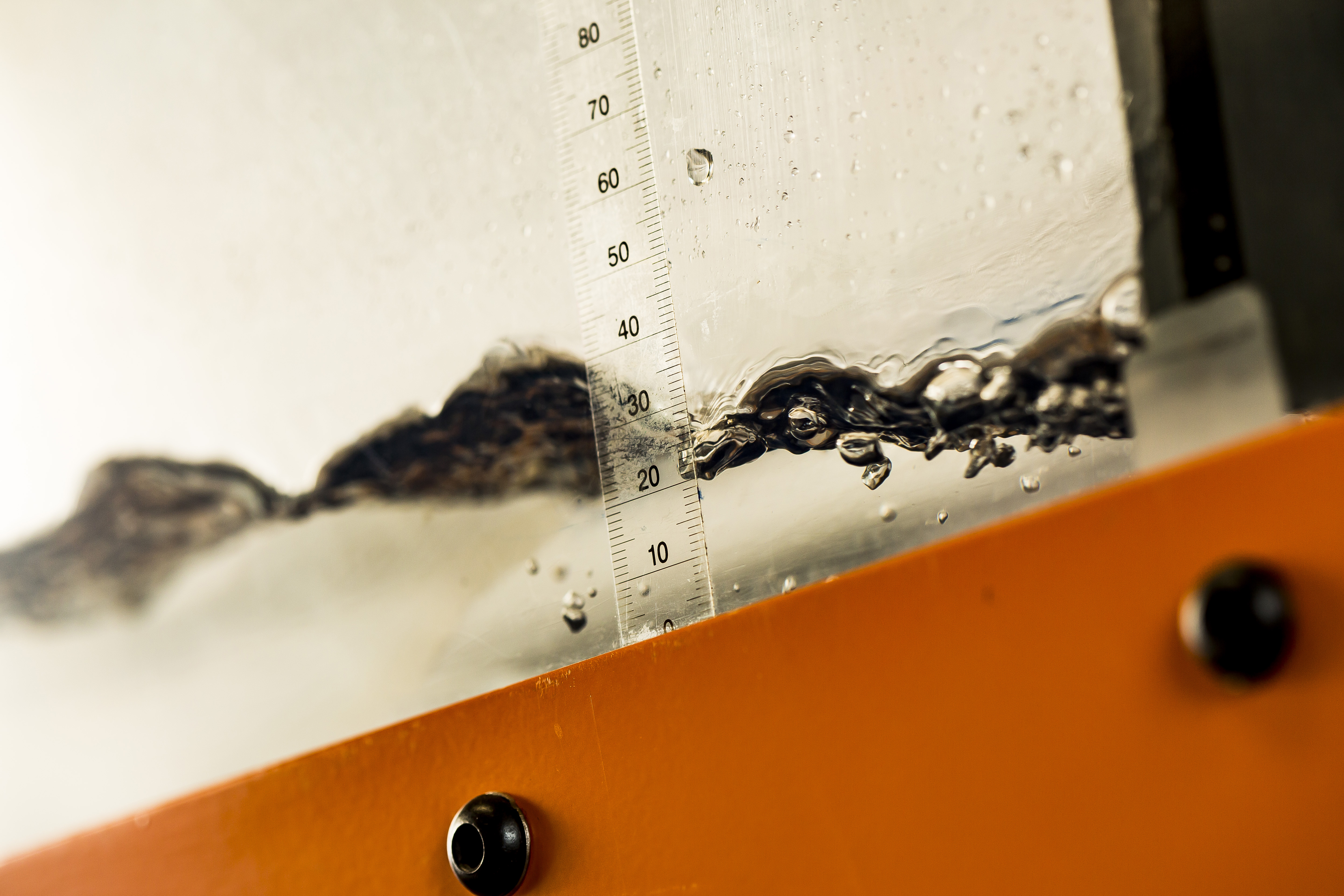Water Resources Laboratory
There are two fluids laboratories supporting research and teaching activities in the field of environmental fluid mechanics: a teaching laboratory (135m2) and a research laboratory (275m2).
The teaching laboratory is designed to enable experiments to be carried out as part of the Undergraduate and Postgraduate courses taught in the department related to fluid mechanics, hydraulics, hydrology and water resources. In addition, Final Year projects (FYP), Undergraduate Research Opportunity Programs projects (UROP) and small-scale research are also carried out in the teaching laboratory. To support these various activities, the laboratory has 7 hydraulic benches, 3 hydrostatic benches, a small scale re-circulating flume, a small-scale sediment transport channel and a hydrology study system. The associated equipment and instrumentation enables a large variety of fluids experiments to be performed and measurements to be obtained, ranging from the classic experiments of Osborne Reynolds on laminar and turbulent flow to more applied experiments such as the performance characteristics of pumps and turbines.
A research laboratory (275m2) contains two large scale research facilities. The first one is a large towing tank (15m long, 2m wide and 1.6m high) that includes a fresh and salt water supply and a computer-controlled trolley system that travels in the longitudinal direction across the tank. The second is a recirculating flume (working section 12.5m long, 0.3m wide and 0.5m high) that includes a sediment transport facility, a random wave generator and an actuator driven dam-break flow generator. Detailed measurements of the flow parameters are obtained using specialized equipment including:
- 3CCD 10-bit digital video cameras and white LED panels (submersible) for measuring integrated concentration through three-dimensional Light Attenuation flow visualization technique
- High-speed digital video cameras (1000Hz, 2MPixel, b/w) and high power pulse Laser (30mJ @ 1000Hz) for measuring velocity through multiphase Particle Image Velocimetry system
- High-speed digital video cameras (1000Hz, 2MPixel, b/w) and high power continuous wave laser (5W) for measuring concentrations through Laser Induced Fluorescent system
- Phase detection optical probes and optoelectronic module that includes Laser emission system and photodetection system for measuring void fractions, bubble sizes and bubble velocities
- Acoustic Displacement Sensors with various application ranges for measurements of the temporal and spatial variations in the location of the free surface
- Acoustic Doppler Velocimeters of various configurations for measurements of the three components of velocity
The research laboratory also houses several high-end computers specifically designed for parallel processing of computational fluid dynamics codes. The laboratory facilities provide support for research in a number of areas including environmental fluid dynamics, coastal engineering, eco-hydraulics and urban hydraulics.


